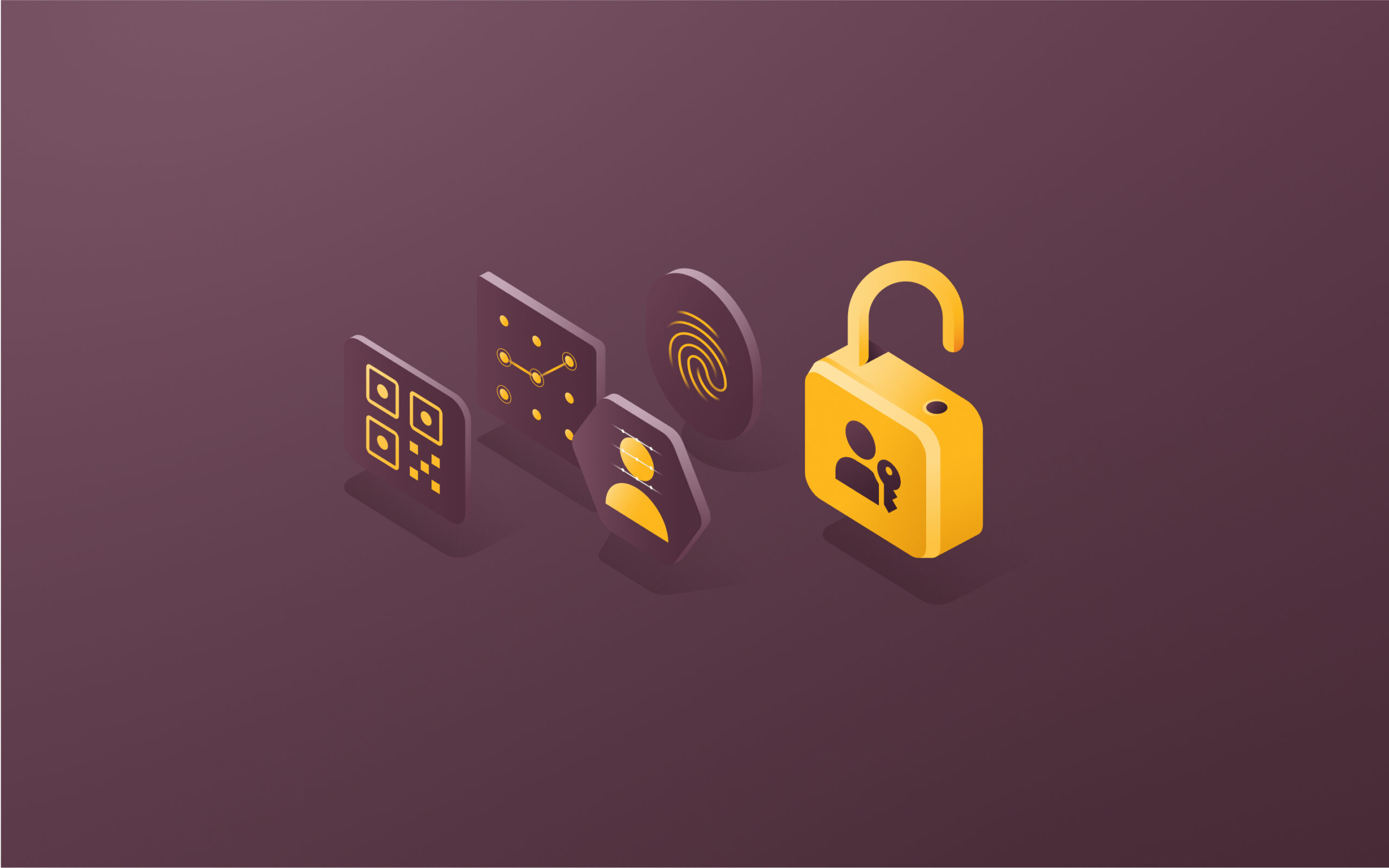Public key vs. private key: Explanation and functionalities

Before public-private key cryptography emerged in the 1970s, secure communication required elaborate key-sharing rituals. Diplomats relied on codebooks and later one-time pads that had to be physically distributed through secure channels. Military forces used complex mechanical machines like the Enigma, and businesses employed expensive secure communication methods that required prior key-sharing arrangements.
Then mathematicians figured out how to create keys that work together but serve opposite purposes, revolutionizing how we think about digital security. This breakthrough solved the fundamental problem that had plagued secure communication for centuries: how do you safely talk to someone you've never met without sharing secrets beforehand?
The answer came in the form of mathematical key pairs that enable secure communication, digital signatures, and identity verification across the internet. In this article, we’ll break down how these (public and private) keys work, when to use each one, and how they team up to secure your communications.
What are encryption keys?
You can think of encryption keys as mathematical tools that turn readable data into a scrambled format and back again. These cryptographic keys protect your information, whether it's stored on servers or sent across networks, using complex math to jumble data in ways that make it nearly impossible to decode without the right key.
When you use an encryption key on your data, it applies mathematical operations that transform your plaintext into a scrambled ciphertext. The key contains the specific instructions needed to reverse this process and get back your original data.
Types of encryption keys
Modern cryptography approaches key management in two fundamentally different ways, each designed to solve specific security challenges.
Symmetric encryption keys
Symmetric encryption uses one key for both encrypting and decrypting data. Both people need the same key to communicate securely, which makes this approach fast and efficient for handling large amounts of data. The tricky part is getting that shared key to everyone who needs it without someone else intercepting it.
Asymmetric encryption keys
Asymmetric encryption uses two related keys that work together but handle different jobs. One key encrypts data that only its partner can decrypt, which solves the tricky problem of how to share keys securely.
This method uses more processing power than symmetric encryption, but it fixes the fundamental challenge of secure communication between strangers. One good example is RSA (Rivest-Shamir-Adleman), which uses the mathematical difficulty of factoring large prime numbers to create secure key pairs.
What is a private key?
A private key is the confidential component of an asymmetric encryption key pair that must be kept secret and never shared with anyone. This key is mathematically linked to its corresponding public key through complex algorithms, but even with significant computational power, deriving the private key from the public key remains practically infeasible.
Your private key serves as your cryptographic identity. When you use it to decrypt messages or create digital signatures, you're providing mathematical proof of your identity that cannot be forged without access to that specific key. Compromising your private key essentially means handing over your digital identity to unauthorized parties.
Advantages of private key encryption
Speed
Private key operations are generally faster than their public key counterparts because the math involved is less complex. When you need to decrypt something quickly or sign multiple documents, private keys get the job done without making you wait.
Less computational power
Your phone, laptop, or even a basic server can handle private key operations without breaking a sweat. This efficiency makes private key encryption practical for everything from mobile apps to IoT devices with limited processing power.
Flexibility
Private keys are multitaskers. The same key can decrypt messages, create digital signatures, and authenticate your identity across different systems. It's like having a Swiss Army knife for cryptographic operations.
Disadvantages of private key encryption
Single point of failure
If your private key gets compromised, stolen, or lost, you lose everything it protects. Unlike passwords that you can reset, a compromised private key means all encrypted data becomes accessible to attackers, and you lose your cryptographic identity.
No recovery options
Lose your private key, and there's often no way to recover encrypted data or regenerate the exact same key. This makes backup and recovery planning absolutely critical, but also more complex than traditional password systems.
What is a public key?
A public key is the shareable component of an asymmetric encryption key pair that can be distributed freely without compromising security. Anyone can use your public key to encrypt messages intended for you or to verify digital signatures you've created with your corresponding private key.
The security stems from the mathematical relationship between the key pair. Messages encrypted with your public key can only be decrypted with your private key, and signatures created with your private key can only be verified with your public key. You can publish your public key in directories, email signatures, or websites without any security risk.
Advantages of public key encryption
Secure communication
Public keys solve the key distribution problem by allowing secure communication without prior coordination. You can establish encrypted channels with previously unknown parties, enabling secure transactions across open networks.
Confidentiality
When someone encrypts a message with your public key, it becomes unreadable to everyone except you. Even if that encrypted message gets intercepted, stolen, or posted on social media, it's still useless without your private key.
Scalability
Public key systems scale efficiently. Each person needs just one key pair to communicate securely with unlimited other users, eliminating exponential key management challenges.
Disadvantages of public key encryption
Performance overhead
Public key operations require significantly more computational muscle than symmetric encryption. For encrypting large files or high-volume communications, the performance difference can be noticeable.
Implementation complexity
Public key systems involve more moving parts—key pair generation, certificate authorities, trust relationships, and key verification processes. This complexity can create more opportunities for implementation mistakes.
Use cases of private and public keys
Public and private keys work as a team, with each handling specific jobs that complement the other. Understanding who does what helps you implement the right solution for your security needs.
Common use cases for public keys
Encrypting emails and files
When you want to send sensitive information to someone via email, you encrypt it using their public key. This ensures that even if your email gets intercepted or your file transfer is monitored, only the intended recipient can actually read the content.
Verifying digital signatures
Public keys let you verify that a document, email, or software update actually came from who it claims to come from. If someone signs a message with their private key, you can use their public key to verify that signature and confirm the message hasn't been tampered with.
Sharing secure connections
Every time you see that little lock icon in your browser, public keys are working behind the scenes. Your browser uses the website's public key to establish a secure connection and verify you're actually talking to the real site, not some imposter.
Common use cases for private keys
Decrypting messages or data
This is the flip side of public key encryption. When someone sends you an encrypted message or file, your private key is what unlocks it and makes it readable again. Only you can do this because only you have the matching private key.
Creating digital signatures
Your private key is like your cryptographic pen for signing documents. When you digitally sign something, you're creating mathematical proof that the document came from you and hasn't been altered since you signed it.
Accessing secure systems
Many secure systems use private keys instead of passwords for authentication. SSH servers, cryptocurrency wallets, and enterprise applications often rely on private key authentication because it's much stronger than password-based systems.
What is the difference between a private key and a public key?
The differences between public and private keys go beyond just "one is secret, one isn't." Each serves a specific roles that make the whole system work.
Visibility and access
Private keys must remain confidential and should never be shared with any party. They require secure storage, careful backup procedures, and strict access controls. Public keys, conversely, are designed for distribution and can be shared freely through directories, websites, or direct communication without compromising security.
Encryption and decryption roles
The keys have opposite jobs. Your private key decrypts messages that were encrypted with your public key. So if someone wants to send you a secret message, they encrypt it with your public key, and only your private key can unlock it.
Authentication use cases
For digital signatures, the roles flip. Your private key creates signatures that prove something came from you, and your public key lets others verify those signatures. It's like having a unique stamp that only you can make, but anyone can verify.
Key management and security
Private keys need Fort Knox-level security. They require secure storage, regular backups, and strict access controls. Lose your private key, and you lose access to everything it protects. Public keys need no special security measures.
Use in asymmetric encryption
Private keys are the critical component that makes asymmetric encryption work. They enable decryption and signing operations that prove your identity. Public keys are the enablers that let anyone interact with your cryptographic identity without compromising your security.
Speed and performance
Private key operations are generally faster because they involve less complex mathematics. When you're signing dozens of documents or decrypting multiple files, this speed difference becomes noticeable. Public key operations take more processing power but enable capabilities that are impossible with symmetric methods alone.
Scalability in networks
Both types of keys scale linearly; each person needs just one of each, regardless of how many people they communicate with. This makes asymmetric encryption practical for large organizations and internet-scale applications.
Feature
Private key
Public key
Visibility and access
Must remain secret and is only accessible to the owner
Can be freely shared and is intended to be distributed
Encryption and decryption roles
Used to decrypt messages that were encrypted with the corresponding public key
Used to encrypt messages that only the matching private key can decrypt
Authentication use cases
Used to generate a digital signature
Used to verify that signature
Key management
Requires strict security measures and secure storage
No special security requirements for storage or distribution
Performance
Generally faster operations
Slower, more computationally intensive operations
Scalability
One key per user regardless of network size
One key per user, freely distributable
How public and private keys work together
Let’s take a look at some practical examples and use cases:
Sending a secure email
Let's say Dan wants to send Sophia a confidential report about their company's upcoming merger. Dan grabs Sophia's public key and uses it to encrypt his message. Now the message looks like complete gibberish to anyone who might intercept it.
When Sophia gets the encrypted email, she uses her private key to decrypt it, revealing Dan's original message. Even if hackers intercept the email during transmission, or if it sits on a compromised email server, they can't read it without Sophia's private key.
Digital signatures
Now let's flip the scenario. Sophia wants to send Dan a document and prove it really came from her, not some imposter. She creates a digital signature by using her private key to encrypt a hash of the document. This signature is like a cryptographic seal that only Sophia could have created.
When Dan receives the document and signature, he uses Sophia's public key to verify the signature. If the verification works, he knows two things: the document definitely came from Sophia, and nobody has altered it since she signed it.
Business applications of key-based encryption
Modern businesses have found countless ways to put public-private key encryption to work, often in ways that users never notice.
Secure remote access
Companies have largely moved away from password-based SSH (secure shell) access to servers, opting instead for public key authentication. IT teams configure servers to accept connections only from users who possess the corresponding private keys. This eliminates the risk of password attacks while making it easier for employees to access the systems they need.
Encrypted email communication
Many organizations implement email encryption using public key infrastructure, especially for communications with external partners or clients. Employees exchange public keys and use them to encrypt sensitive business communications, ensuring that confidential information stays protected even if email systems are compromised.
File transfer and cloud security
Businesses regularly encrypt sensitive files before uploading them to cloud storage or sending them to external partners. By using recipients' public keys for encryption, organizations ensure that confidential documents remain secure throughout the transfer process and can only be accessed by intended recipients.
Employee identity and access management
Companies integrate public key authentication into their identity and access management systems to provide strong, password-free authentication for critical business applications. This approach reduces the risk of credential theft while improving the user experience for accessing secure systems.
How Rippling helps you manage digital security
Rippling's comprehensive IT security platform provides the infrastructure needed to support modern authentication and access control workflows. The platform's identity and access management features create the foundation for implementing secure authentication across your organization.
Rippling's IAM system includes user provisioning, single sign-on, dynamic multi-factor authentication, and built-in password management capabilities. These features work together to create secure access controls that can integrate with advanced authentication methods and public key infrastructure.
The platform also provides device encryption enforcement and real-time monitoring of encryption status across your fleet, ensuring that endpoints maintain a proper security posture. Combined with SOC 2 Type II, ISO 27001, and CSA STAR Level 2 compliance, Rippling offers enterprise-grade data security features that support comprehensive data protection strategies.
Whether you're implementing secure remote access, managing user authentication, or protecting sensitive data across multiple systems, Rippling provides the tools needed to maintain strong security practices without the complexity of managing multiple point solutions.
Public key vs private key FAQs
Can a public key be used to decrypt?
Public keys can't decrypt data that was encrypted with the same public key—that would defeat the whole purpose of encryption. However, public keys can decrypt digital signatures that were created with the corresponding private key, which is how signature verification works. For message confidentiality, only the private key can decrypt data that was encrypted with its matching public key.
Why are two keys used instead of one?
Using two mathematically related keys solves the key distribution problem that makes symmetric encryption impractical for many scenarios. With public key cryptography, you can publish one key freely while keeping the other secret, enabling secure communication without prior coordination. This also enables digital signatures, where the private key creates signatures that anyone can verify using the public key.
Is a password the same as a private key?
Passwords and private keys are completely different beasts. Passwords are human-readable secrets that you remember and type, while private keys are large mathematical values stored in digital files. Private keys provide much stronger security than passwords and enable cryptographic operations like digital signing that passwords can't perform. However, private keys are often protected by passwords to prevent unauthorized use if the key file is stolen.
This blog is based on information available to Rippling as of July 3, 2025.
Disclaimer: Rippling and its affiliates do not provide tax, accounting, or legal advice. This material has been prepared for informational purposes only, and is not intended to provide or be relied on for tax, accounting, or legal advice. You should consult your own tax, accounting, and legal advisors before engaging in any related activities or transactions.











